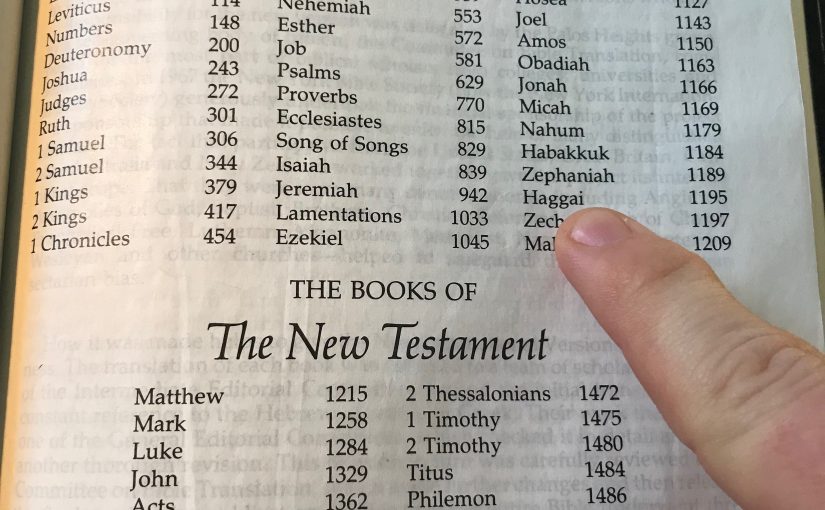
Category: Bible
-

Exodus Memory Verse
Read More: Exodus Memory VerseHere we are at week 2 of memorizing a verse from each book of the Bible in a year. This week’s verse comes from the Song of Moses and Miriam found in Exodus 15. They are praising God for delivering them from the hands of the Egyptian army after fleeing from them and making it…
-

Where’s Haggai?: How to Help Kids Navigate the Bible
Read More: Where’s Haggai?: How to Help Kids Navigate the BibleIt’s on page 1,195 of course! So yeah, even most adults need the table of contents if the pastor says, “Turn to the second chapter of Haggai as we look at what this prophet says to Zerubbabel.” And if you work with kids in a church or ministry setting, you know the challenge of trying…
-

Stewards of the Story
Read More: Stewards of the StoryLast night, I was working with my seven year-old daughter on a Bible verse that she is trying to memorize. The verse spoke about the “fear of God” and we had a good discussion about the definition of the word “fear” in that context. While that alone is a whole other discussion, the point I…
Search
Popular Posts
-
“Holy Fools”: Exploring the Journey of Calling for Christian Variety Performers
I am happy to announce that my PhD dissertation has been published to ProQuest, an academic database for published research. I have made the dissertation open source, which means anyone anywhere can access the full content free of charge. Here is the full dissertation: https://www.proquest.com/dissertations-theses/holy-fools-exploring-journey-calling-christian/docview/2622316783/se-2 Please share far and wide. I am very much excited…
-
The Easiest Large Group Game Ever
This is probably the easiest large group game ever invented. If you can think of an easier one, please let me know in the comments. Heads or Tails! This game of heads or tails involves EVERYONE in your large group. It is actually better the larger the group gets. There is an elimination factor to…
-
Book Release! Incredibly Bad Dad Jokes
I have been writing down my original Dad jokes for several years now, but recently they dramatically increased. While the past five months of my life have been the toughest for me as a Dad (with Annie’s medical crisis), the Dad jokes actually came out in full force during this season. You see, in my…
-
A Children’s Ministry Poem
From the mouths of children come questions galore about heaven and angels and Satan and more. They speak what their hearts say without holding back, so the wonder of God is something they never lack. Oh God, who are you? Who inspires the minds of little ones many, so that they may find this Jesus…
-
Joyner Family Christmas 2024 Update
Merry Christmas from the Joyners! Here’s a little bit of our life this past year. We hope and pray the Lord’s peace and blessing over you this Advent season. D – Our little guy is now 5 years old! This year he played Tee Ball in the Spring and started soccer this past Fall when…


